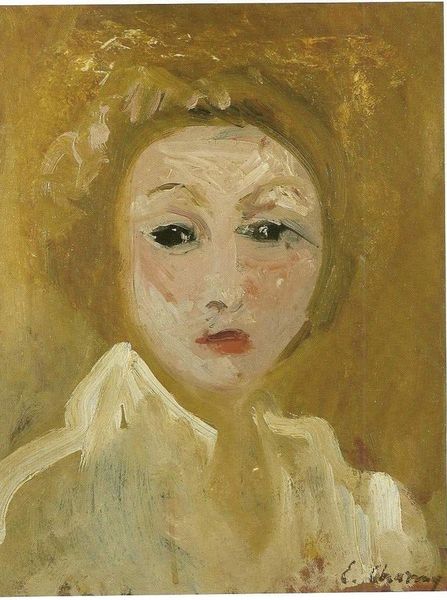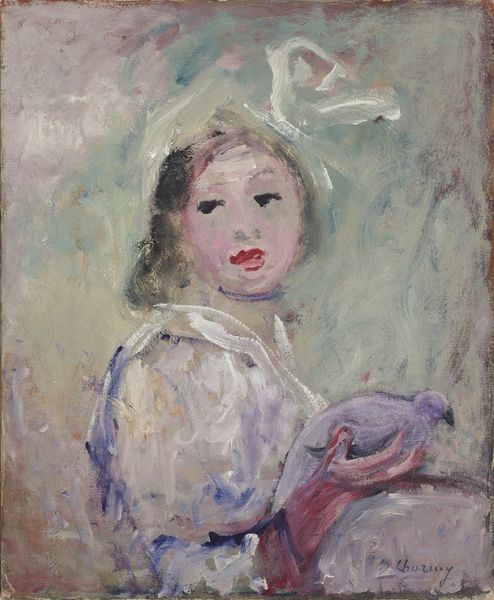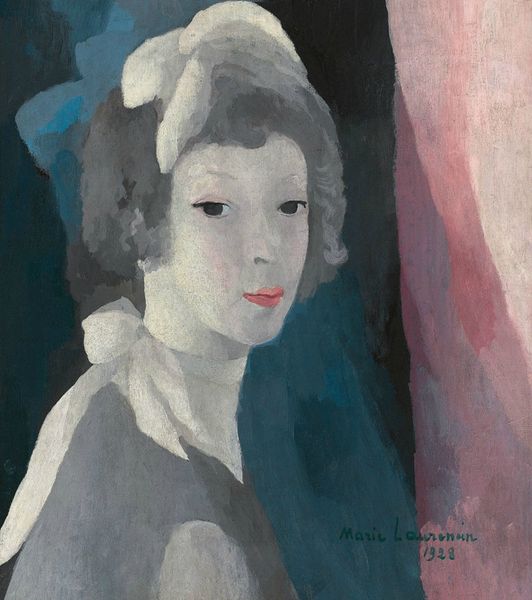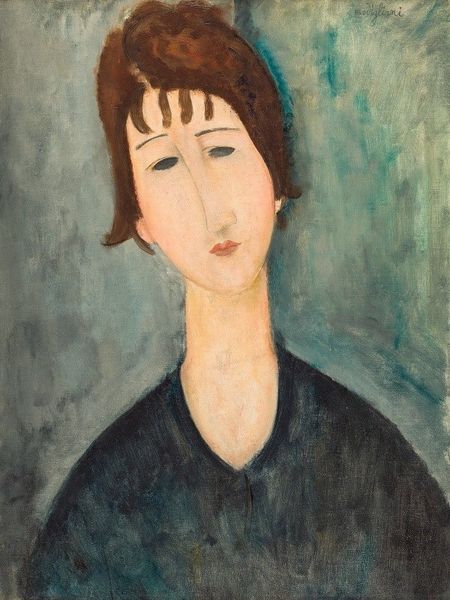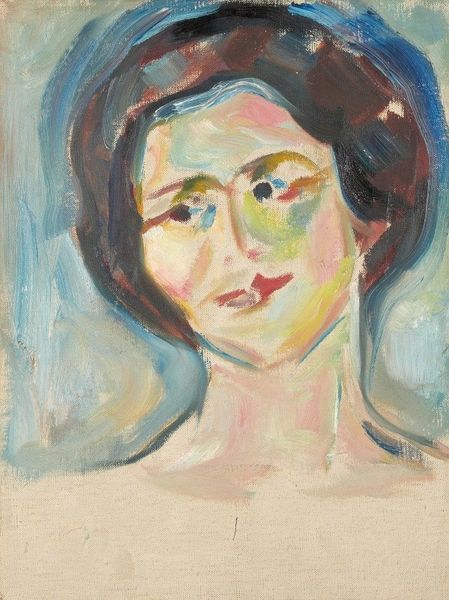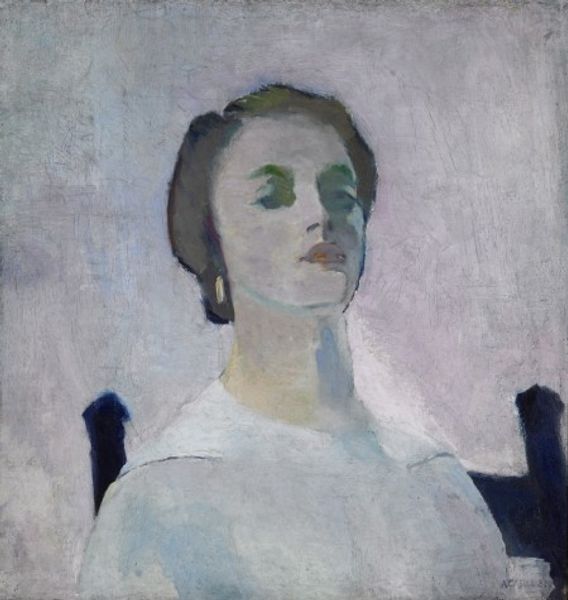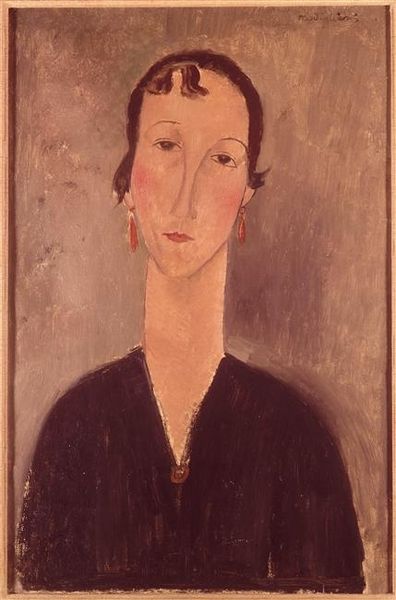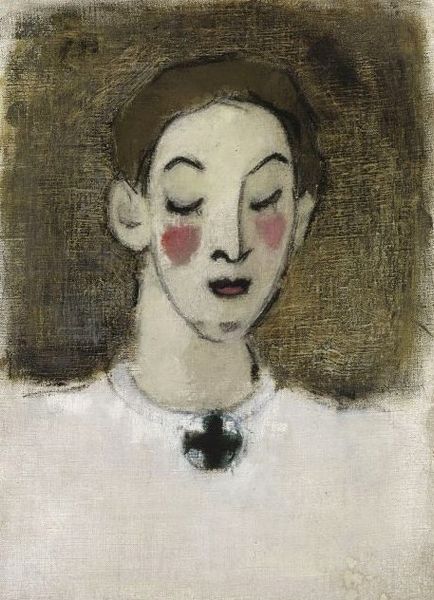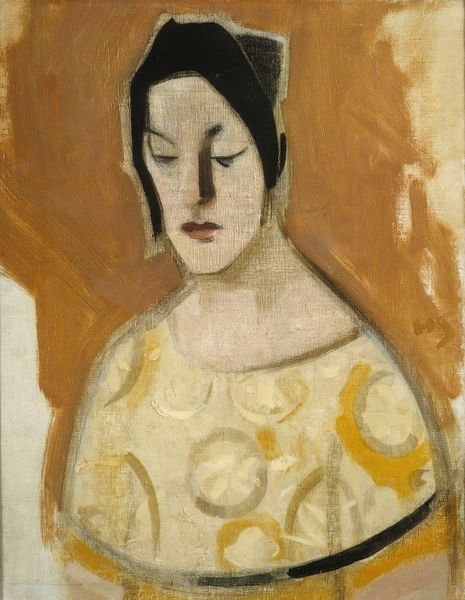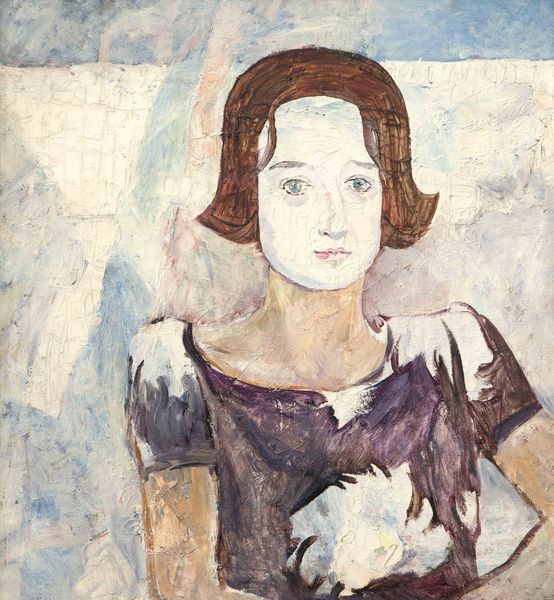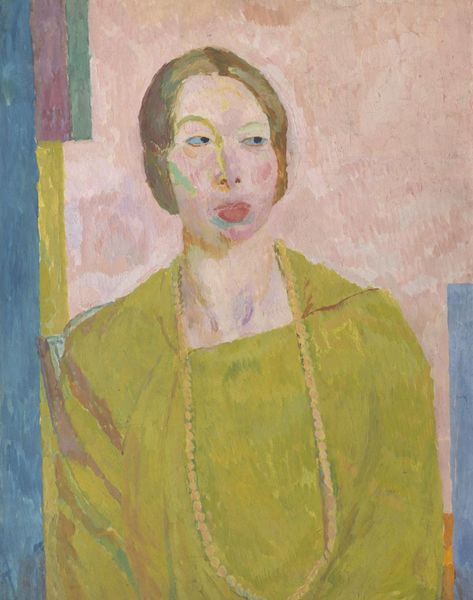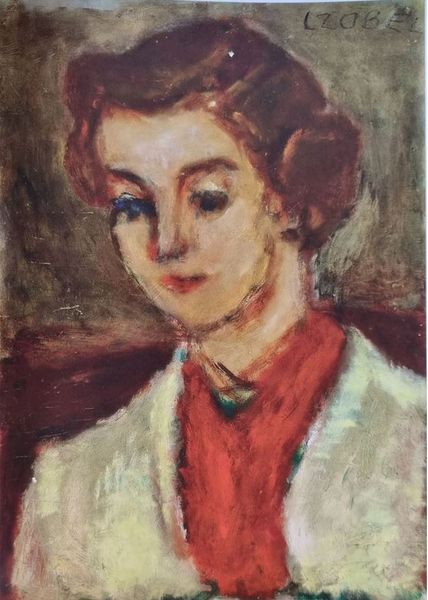
painting, oil-paint
#
portrait
#
art-deco
#
head
#
face
#
painting
#
oil-paint
#
figuration
#
oil painting
#
intimism
#
lady
#
forehead
#
portrait art
Copyright: Marie Laurencin,Fair Use
Curator: Looking at Marie Laurencin's "Woman with Turban" from 1941, the palette immediately strikes me. There’s a certain sweetness, a sort of muted joy conveyed by those pastels. Editor: It's quite charming at first glance. However, the almost translucent quality of the oil paint and those barely-there brushstrokes reveal a conscious act of layering, of constructing this feminine image with deliberate artifice. It speaks to the constructed nature of identity itself, doesn't it? Curator: Absolutely. The period she was painting in, amidst the turmoil of the Second World War, further emphasizes that constructedness. Laurencin, having lived in exile during the First World War, navigates identity, particularly feminine identity, against a backdrop of political unrest. This isn't merely a portrait; it is a coded response to prevailing social norms. Editor: The turban itself is interesting. It adds a touch of the exotic, a hint of the "other" which was fashionable but also laden with colonial baggage. Examining the materials used – oil paint, canvas, and pigments – brings to light questions about the accessibility of these materials, and how they contributed to the perpetuation of certain aesthetic styles. This was, after all, a commodity, produced and consumed within specific social conditions. Curator: I think we can read her artistic choices, her deployment of soft lines, and delicate coloring, as Laurencin staking her claim within a male-dominated artistic milieu, subverting their expectations through this subtle performance. It is worth noting that female artists had to contend with constraints that are material as much as they are social. Editor: Yes, and in this context, consider the means of her artistic production. How might her gender have shaped the conditions of her labor and access to markets, and, conversely, the themes and subjects of her paintings? Curator: Precisely. So, the portrait, while seemingly delicate, encapsulates so many intersectional narratives: gender, class, and the very act of creating art during wartime. Editor: It reminds us to look beyond the surface sheen, to see art as the product of a particular set of socio-economic relations and power dynamics. Curator: Definitely something to think about as we engage with more art today! Editor: Agreed, it offers valuable lessons that stretch well beyond 1941.
Comments
No comments
Be the first to comment and join the conversation on the ultimate creative platform.
